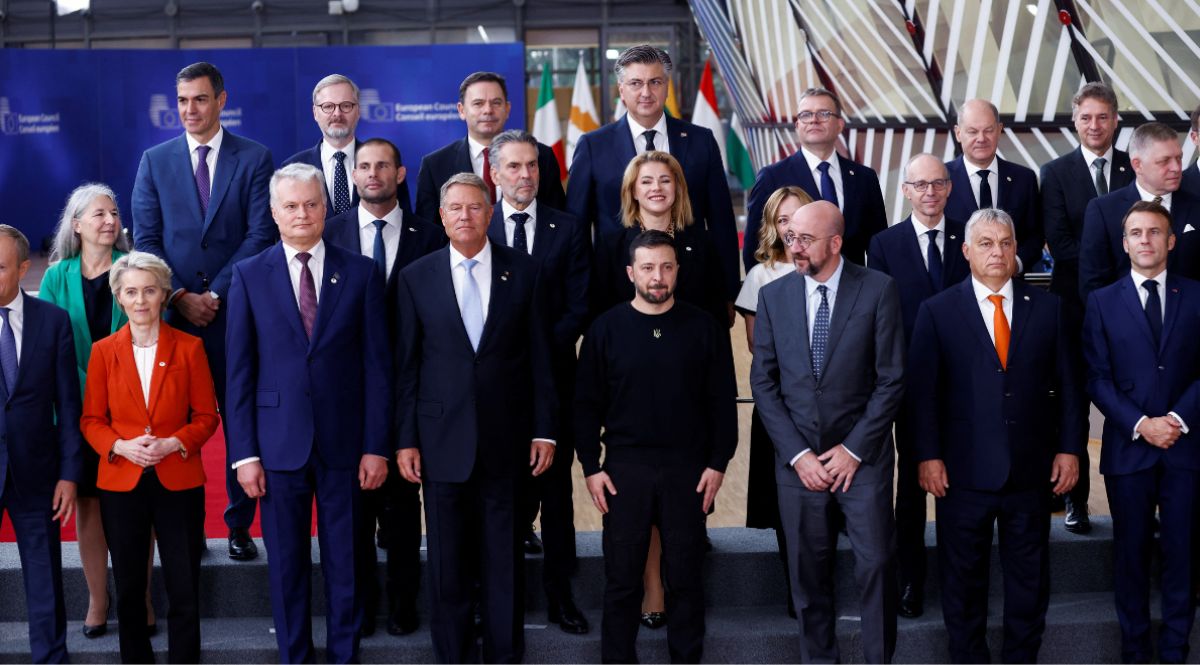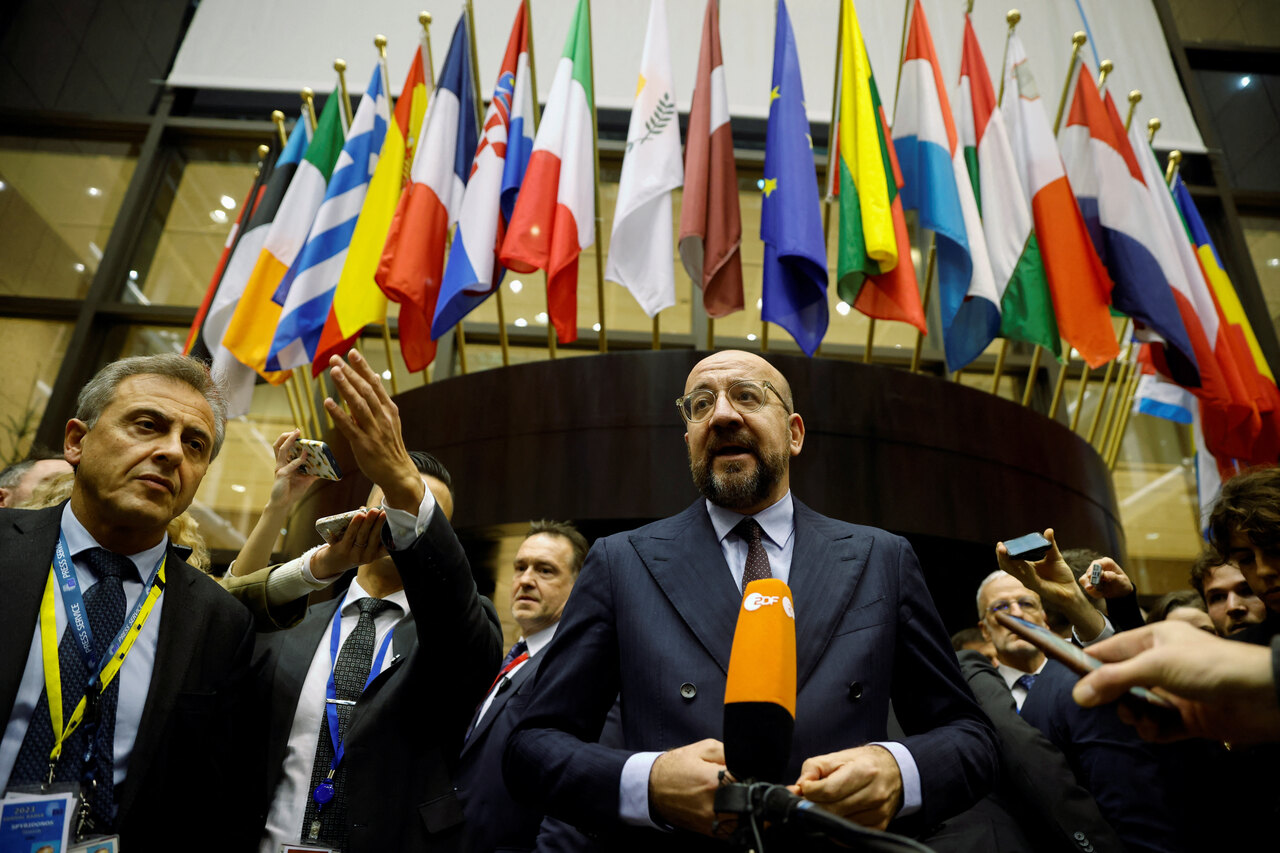Ukraine's Potential Membership of the EU will have Union-wide Economic Consequences
Ukraine membership would benefit the EU by increasing the single market and economic security in the fields of critical raw materials and new technologies, among other things. However, it might cause resistance from certain sectors of the economy, for instance, agriculture and services, due to increased competition. It would also affect the design of agricultural and cohesion policies, as the country would become one of the main beneficiaries. Possible divergences during the accession negotiations could be reduced by the use of transition periods and other tools.
 Johanna Geron / Reuters / Forum
Johanna Geron / Reuters / Forum
According to the European Commission’s (EC) assessments in the October enlargement package, Ukraine is moderately prepared to participate in the free movement of goods, partly in services and capital, and to a small extent in the case of people. The EU ties its financial assistance to Ukraine covering the current needs and reconstruction in 2024-2027 to the accession process, for example, the EC makes the disbursement of part of the funds conditional on the implementation of reforms by this country, including economic ones. A long-term challenge will be to integrate Ukraine’s economy into the EU. This is related, among other things, to the development gap—in 2020, Ukraine’s GDP per capita was 29.8% of the EU average—as well as the need to adjust EU policies to the specificity of the Ukrainian economy based on, among other things, agriculture. Despite the war, Ukraine remains a competitive agricultural producer, also on the European market, due to its favourable soil and climatic conditions and export-oriented large-scale farms with low production costs.
Ukraine’s Economic Integration with the EU before the Russian Invasion
As a result of the Deep and Comprehensive Free Trade Area (DCFTA) agreement concluded by the EU with Ukraine in 2014 and applied since 2016, the parties abolished almost all tariffs on trade. However, they introduced export quotas and transition periods for the elimination of tariffs for up to 10 years on selected products. Ukraine also committed to adopt a number of EU rules in the areas of customs cooperation, public procurement, competition, services, intellectual property, the energy market, and sustainable trade. By the end of 2021, it had made the most progress in the sphere of the standardisation of trade in goods, with the DCFTA leading to a dynamic increase in trade. EU exports to Ukraine increased from €16.2 billion in 2016 to €28.3 billion in 2021, and imports from €12.8 billion to €24 billion, respectively. Poland and Germany have become Ukraine’s main trading partners in the EU.
In the wake of Russian aggression, in 2022 the EU further liberalised Ukraine’s access to the single market. The EU extended the provisions of the Temporary Protection Directive to refugees from Ukraine (around 4 million people), giving them access to the EU labour market and health and social benefits. It temporarily fully liberalised trade with Ukraine until 5 June 2025. It also opened up the road haulage market by abandoning the licensing system. However, these measures have caused tensions with the public within the EU. Due to unequal competition from Ukrainian companies, Polish hauliers protested in late 2023-2024. A sudden increase in exports of certain Ukrainian agricultural products, including cereals to Bulgaria, Poland, Romania, Slovakia, and Hungary in 2022, in turn, triggered protests by farmers and the introduction of bilateral import bans, resulting in the EU reintroducing tariffs on certain goods for several months in 2023. Due to the partial unblocking of trade through the Black Sea ports the value of Ukrainian agricultural exports to the EU fell, so in June 2024 the EC only introduced a safeguard mechanism. It allows the re-imposition of duties on eggs, poultry, sugar, oats, maize, groats, and honey if their imports exceed certain thresholds (already applied to several products).
Key Implications of Ukraine’s Membership for the EU Economy
Ukraine’s accession to the single market would increase the size of the market and thus Ukraine’s trade with other EU Member States, especially those geographically close to it, including Poland and Germany. The growing wealth of its population would create a receptive market for products from other EU countries. According to the experience of previous EU enlargements, this would contribute to GDP growth in these countries as their domestic production and employment, among other things, would increase. Institutional and economic reforms would provide opportunities for foreign investment. Liberalisation of the movement of people could lead to further labour migration to the EU. However, due to the large outflow of people from Ukraine in recent years (labour migration since 2014 and refugee movement since 2022) and its demographic problems, the scale of it may be limited. Tensions would arise in economic sectors where Ukrainian goods and services are competitive with EU ones. For example, although the integration of Ukrainian agricultural production into the EU would strengthen the Union’s position on the global market, in some areas EU producers are structurally less competitive than Ukrainian ones, for example Polish firms in the cereals, oilseeds, sugar, and poultry meat sectors.
The level of disbursements to Ukraine under the EU budget will depend on the timing of its entry into the EU and its economic and social situation, the assumptions of the future multiannual financial framework and the negotiated conditions. Ukraine remaining outside the Union would generate high costs on the EU side in terms of ensuring the former’s economic stability, among other things. Taking into account the assumptions of the current financial framework, according to analytical institutions (Bruegel, CEPS, German Economic Institute), Ukraine’s membership would not fundamentally affect the position of budget contributors and beneficiaries. It would change its structure, as expenditures under the Common Agricultural Policy (CAP) would increase significantly and the distribution of cohesion policy funds would change. The average EU gross national income per capita (a criterion for the allocation of funds) would decrease, so some of the regions would receive €19-24 billion less in funding. Ukraine’s accession would therefore increase the pressure to reform both policies. Taking into account Ukrainian indicators from 2021 (e.g., GDP, population, or hectares of agricultural land) and various conversion methods, the net cost of Ukraine’s EU membership would oscillate between €137 billion and €190 billion over seven years, of which it would receive €85-90 billion under the CAP and €32-90 billion under the cohesion policy. Based on figures from 2022-2023, the net cost would fall to €110-130 billion, of which Ukraine would receive €68-73 billion from the CAP and €27-63 billion from the cohesion policy.
Ukraine’s EU membership could enhance EU security by integrating Ukrainian companies into EU supply chains in the critical raw materials and new technology sectors, among others. In 2021, Ukraine was among the world’s top ten producers of aluminium, titanium and titanium dioxide, manganese, magnesium metal, and graphite, although the war has reduced its production capacity. Ukraine also has unexploited deposits of titanium, lithium, and rare earth elements, a group of non-ferrous metals, but they remain insufficiently explored. Ukraine has the potential to develop artificial intelligence in the fields of defence, nuclear energy, and aviation, among others. The war has also strengthened the role of the IT sector in the economy and military. In 2023, the sector generated 4% of GDP while IT services accounted for 13.2% of Ukraine's total exports, with the United States as the main customer.
Outlook
The progress of the accession negotiations remains conditioned by the course of the war and the implementation of rule-of-law reforms in Ukraine. Talks on EU economic integration with Ukraine can only take place after the opening of the first cluster on fundamental issues (e.g., judiciary), which is planned by the EC during the Polish presidency of the Council of the EU in the first half of 2025. No chapter will be closed until Ukraine meets the EU conditions in the sphere of the rule of law.
Member States will have to work out a compromise first among themselves and then with Ukraine on the pace of opening the EU market to it and the rules for using EU funds, especially the CAP. This will be a difficult process, as measures liberalising Ukraine’s access to the EU market from 2022 have highlighted to decision-makers the potential for social tensions in the agriculture and transport services sectors. Ukraine’s neighbouring countries will pressure Ukraine to fully implement EU standards to avoid disruption to the internal market. Based on the practice of previous EU enlargements, transitional periods or tailor-made rules for the provision of funds may be a solution. Poland, taking into account the increased competition between countries related to EU enlargements, can point to the mutual benefits of economic integration in Europe, referring to its own experience. To assist Ukraine, already during negotiations it can support further deepening of EU integration with this country especially in sectors with modernisation potential, such as the digital market.




.jpg)
